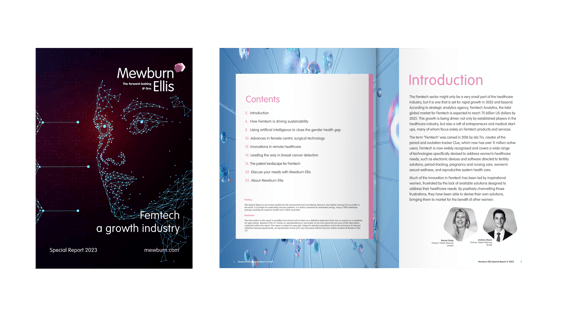
Breast cancer does not only affect women, but it mostly affects them1. Breast cancer is the most common cancer in the UK. Yet in England, about 3 in 4 women diagnosed with breast cancer will go on to live for 10 years or more2. I would argue that this relatively encouraging statistic is at least in part a result of progress stemming from the availability of large amounts of data about this cancer. Today, data driven research is part of the core of most biological research. Data about breast cancer has been available in amounts that have, in part, fostered the development of many advances in data driven cancer research for many years, with great benefits to patients.
Most breast cancers are treated with surgery as a first line of treatment. However, additional treatments exists to reduce the size of the tumour, prevent recurrence, or treat lesions that cannot be removed. Their use today in the clinic is guided by data in what has come to be known as a “personalised medicine” approach, for which breast cancer was an early success story.
The history
Some breast tumours depend on hormones for their growth, and back in the 70’s, anti-oestrogen drugs such as tamoxifen began to be investigated for their potential in treating breast cancers that express the oestrogen receptor (termed ER+ cancers). Tumours that express the progesterone receptor (PR+ cases) were later also found to respond to endocrine therapy.
Then in the late 90’s, overexpression of the Her2 protein (human epidermal growth factor receptor 2) was identified as another driver of some breast cancers (Her2+ cases), leading to the development of inhibitors such as trastuzumab (marketed as Herceptin). To this day in England, women diagnosed with breast cancer are routinely tested to determine their ER / PR / HER2 status. Cancers that do not express any of these markers are called “triple-negative” and are the hardest to treat. However, it quickly transpired that this was not the whole picture, and each of these groups is heterogeneous in prognosis and response to the targeted inhibitors.
Progress made
This led to the development of a breast cancer classification grouping cases in ‘subtypes’ with different pathophysiological features and prognosis3, and a plurality of gene expression based prognostic tests based on this concept. For example, methods such as ‘PAM50’4, OncoDx Breast Recurrence and MammaPrint are all gene expression-based tests whose development was fostered by the advance of high throughput gene expression technologies, providing a risk score of distant recurrence - that can be used to assess the likelihood of a patient benefiting from adjuvant chemotherapy.
In England, the National Institute for Health and Care Excellence (NICE) guidelines5 further recommend the use of a statistical method (called ‘PREDICT’6) based on epidemiology data that predicts the risk of breast cancer mortality post-surgery based on factors such as age, tumour size, grade, etc. This is used to decide whether to use gene expression-based tests.
Availability of yet further data quickly showed that the earlier classification was oversimplistic. In the first few years of the genomic era, large international omics projects such as METABRIC7 analysed the genomic and transcriptomic features of large breast cancer cohorts and identified further subgroups with distinct clinical outcomes. Around the same time, a new methodology was being developed, as a result of greater availability of large amounts of cancer genomic data: mutational signatures8. This method attempts to uncover patterns in the mutations identified in cancers that are associated with underlying mutational processes, and is now widely used to characterise cancer. However, it was first exemplified extensively in breast cancer, where it was also extended to look at a type of genomic lesion called “genomic rearrangements”9.
In parallel with the identification of receptors driving breast cancer growth, genetic risk factors associated with breast cancer were identified, most famously BRCA1 (BReast CAncer gene 1) and BRCA2, and genetic tests to identify mutations in these were developed. BRCA1/2 encode proteins that help repair DNA damage through a mechanism called “homologous recombination” (HR). Mutations in these genes can make this function deficient (HR deficiency), and drastically increase the risk of developing breast cancer10. Thus, women carrying these mutations can be offered more enhanced screening. Additionally, HR deficiency is also a key marker for personalized therapy. Indeed, HR deficient cancers are believed to be more likely to respond to drugs that generate a particular type of DNA lesions (e.g. PARP inhibitors).
However, with the availability of increasing amounts of genomic data, it also became clear that a “single gene” approach to disease etiology in cancer far from captured the full picture. Indeed, using the concepts of mutational signatures, machine learning methods were developed that can identify HR deficient cancers including but not limited to those with known BRCA1/2 mutations11. These have already shown promise in the clinic12 and could be part of the next wave of data driven personalised medicine approaches that might further improve the likelihood of survival of women diagnosed with breast cancer.
Conclusions
There have been some tremendous successes so far but there is also a very long road ahead. The path on this road follows a data trail and I’m excited to see where it takes us. At Mewburn Ellis we’re passionate about women’s health and we’re excited to follow this emerging data trail as it leads us towards improved diagnosis and prognosis of breast cancer, and new precision medicine approaches to treating breast cancer. The patents and applications that we’re involved with in this space have the potential to change women’s lives, helping the companies that are developing them to secure funding and protect investments as they transition from concept to clinic.
If you’d like to work with us to develop an IP strategy and build a robust patent portfolio that works for your business, do get in touch.
|
|
Femtech: a growth industryOur report explores just some of the exciting new technologies that have entered the Femtech market in recent years, as well as analysing the patent landscape to better understand the evolution of the Femtech space and how technology focuses are shifting. |
1Male breast cancer cases represent approximately 0.5-1% of all breast cancer cases worldwide. https://www.who.int/news-room/fact-sheets/detail/breast-cancer
2High prevalence is difficult to disentangle from better screening / diagnosis. More cases may mean that the cancer tends to be better diagnosed and hopefully caught earlier. We know that in many cancers early diagnosis is key to survival.
3 In particular: luminal A (usually ER+ and/or PR+ and HER2-, about 20% of cases, tend to have best prognosis), luminal B (usually triple positive, good prognosis, about 12% of cases), Her2-amplified (ER-, PR-, HER2+, poorer outlook but treatable with herceptin), basal-like tumours (usually triple negative about 20% of cases, poor prognosis).
4 Supervised Risk Predictor of Breast Cancer Based on Intrinsic Subtypes. Parker et al., Journal of Clinical Oncology 27, no. 8 (March 10, 2009) 1160-1167. The test is now marketed by Prosigna.
5 https://www.nice.org.uk/guidance/ng101/chapter/Recommendations
6 https://breast.predict.nhs.uk/legal/algorithm
7 Molecular Taxonomy of Breast Cancer International Consortium, see Curtis et al., Nature volume 486, pages 346–352 (2012)
8 Deciphering Signatures of Mutational Processes Operative in Human Cancer Alexandrov et al. VOLUME 3, ISSUE 1, P246-259, JANUARY 31, 2013 Cell reports
9Mutational Processes Molding the Genomes of 21 Breast Cancers Niz-Kainal, Cell VOLUME 149, ISSUE 5, P979-993, MAY 25, 2012; Nik-Zainal et al., Nature volume 534, pages 47–54 (2016) Landscape of somatic mutations in 560 breast cancer whole-genome sequences.
10About 13% of women will develop breast cancer in their lifetime, but around 55%–72% of women who inherit a harmful BRCA1 variant and 45%–69% of women who inherit a harmful BRCA2 variant will develop breast cancer (https://www.cancer.gov/about-cancer/causes-prevention/genetics/brca-fact-sheet)
11 HRDetect is a predictor of BRCA1 and BRCA2 deficiency based on mutational signatures Davies et al., Nature Medicine volume 23, pages 517–525 (2017)
12 Chopra et al. Nat Commun. 2020; 11: 2662
Camille is a Partner and Patent Attorney at Mewburn Ellis. She does patent work in the life sciences sector, with a particular focus on bioinformatics/computational biology, precision medicine, medical devices and bioengineering. Camille has a PhD from the University of Cambridge and the EMBL-European Bioinformatics Institute. Her PhD research focused on the combined analysis of various sources of high-content data to reverse engineer healthy and diseased cellular signalling networks, and the effects of drugs on these networks. Prior to that, she completed a Master’s degree in Bioengineering at the University of Brussels and a Masters in Computational Biology at the University of Cambridge.
Email: camille.terfve@mewburn.com
Sign up to our newsletter: Forward - news, insights and features
Our people
Our IP specialists work at all stage of the IP life cycle and provide strategic advice about patent, trade mark and registered designs, as well as any IP-related disputes and legal and commercial requirements.
Our peopleContact Us
We have an easily-accessible office in central London, as well as a number of regional offices throughout the UK and an office in Munich, Germany. We’d love to hear from you, so please get in touch.
Get in touch



